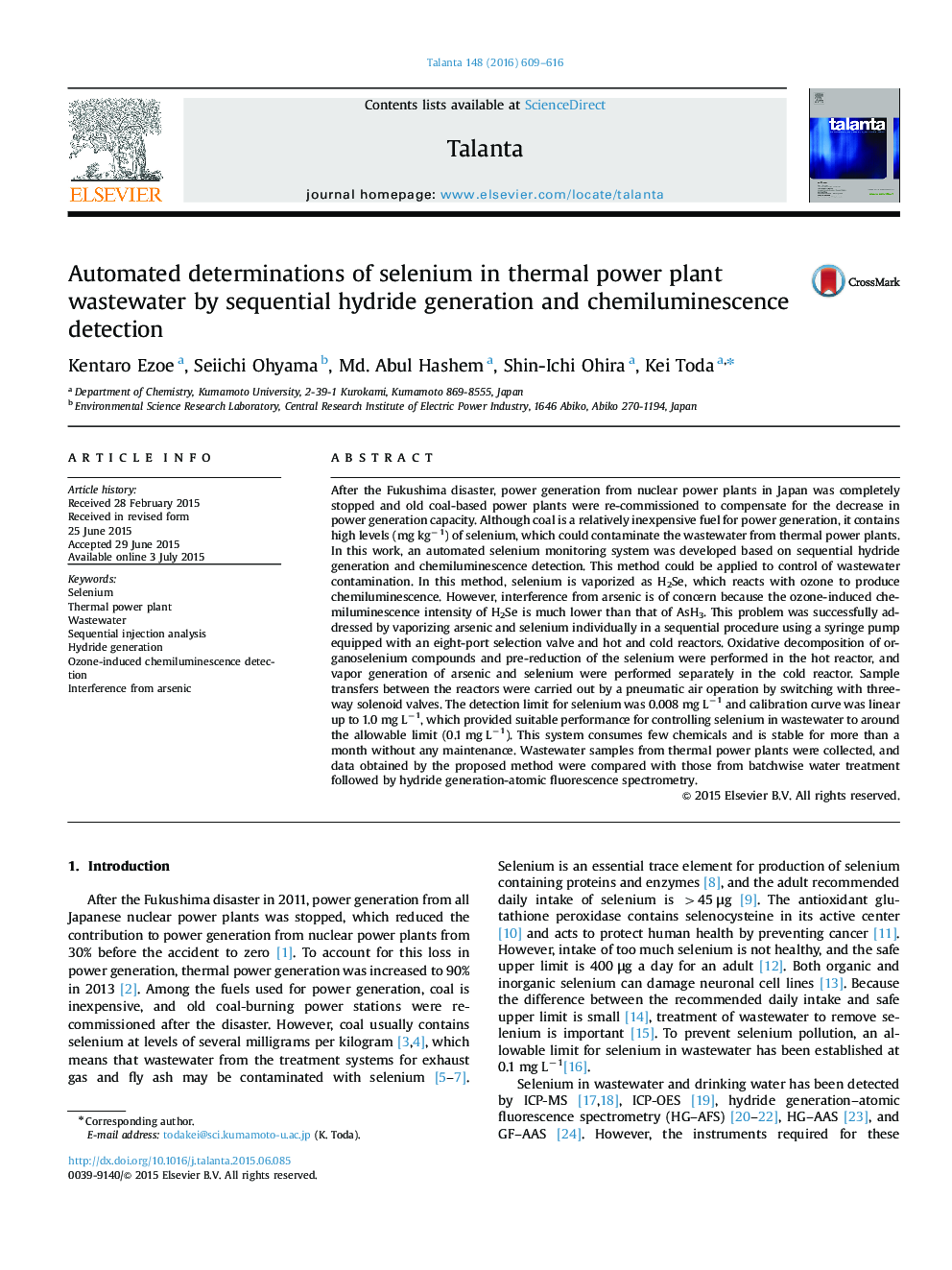| Article ID | Journal | Published Year | Pages | File Type |
|---|---|---|---|---|
| 1243826 | Talanta | 2016 | 8 Pages |
We developed a novel flow system for monitoring selenium in power plant wastewater.Sub-ppm selenium is detected by hydride generation and chemiluminescence detection.Arsenic is removed by selective vaporization before selenium hydride generation.Organic decomposition and reduction of selenate were performed in a hot reactor.Selenium can be determined automatically for a month without maintenance.
After the Fukushima disaster, power generation from nuclear power plants in Japan was completely stopped and old coal-based power plants were re-commissioned to compensate for the decrease in power generation capacity. Although coal is a relatively inexpensive fuel for power generation, it contains high levels (mg kg−1) of selenium, which could contaminate the wastewater from thermal power plants. In this work, an automated selenium monitoring system was developed based on sequential hydride generation and chemiluminescence detection. This method could be applied to control of wastewater contamination. In this method, selenium is vaporized as H2Se, which reacts with ozone to produce chemiluminescence. However, interference from arsenic is of concern because the ozone-induced chemiluminescence intensity of H2Se is much lower than that of AsH3. This problem was successfully addressed by vaporizing arsenic and selenium individually in a sequential procedure using a syringe pump equipped with an eight-port selection valve and hot and cold reactors. Oxidative decomposition of organoselenium compounds and pre-reduction of the selenium were performed in the hot reactor, and vapor generation of arsenic and selenium were performed separately in the cold reactor. Sample transfers between the reactors were carried out by a pneumatic air operation by switching with three-way solenoid valves. The detection limit for selenium was 0.008 mg L−1 and calibration curve was linear up to 1.0 mg L−1, which provided suitable performance for controlling selenium in wastewater to around the allowable limit (0.1 mg L−1). This system consumes few chemicals and is stable for more than a month without any maintenance. Wastewater samples from thermal power plants were collected, and data obtained by the proposed method were compared with those from batchwise water treatment followed by hydride generation-atomic fluorescence spectrometry.
Graphical abstractFigure optionsDownload full-size imageDownload as PowerPoint slide
